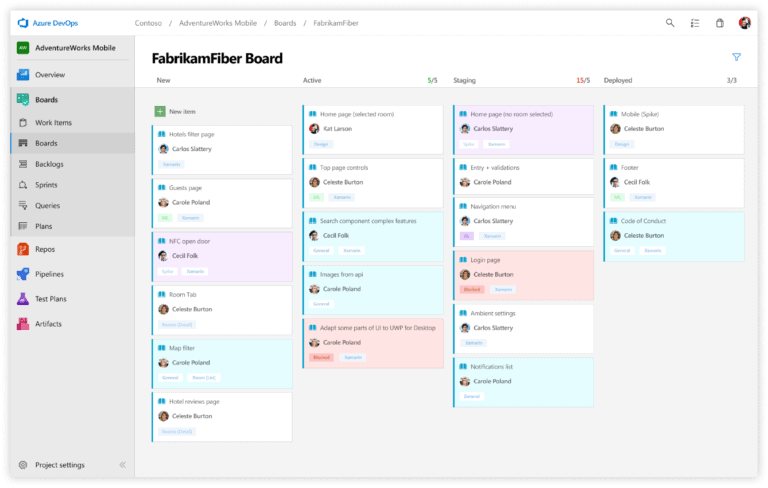Microsoft launches Azure DevOps as a successor for Visual Studio Team Services. Existing users are automatically upgraded, without losing functionality.
Azure DevOps is Microsoft’s new cloud service that allows software developers to work more efficiently together on code.
The services we announce today cover the entire development cycle to help developers deliver software faster and with higher quality. They are the most complete offer in the public cloud, says Jamie Cool of the Azure DevOps team in a blog post.
All-in-one
The solution includes Azure Pipelines, Azure Boards, Azure Artifacts, Azure Repos and Azure Test Plans.
Over the past month, more than 80,000 internal Microsoft users and thousands of our customers, both in small and large teams, have used these services to deliver products, says Cool.
Azure Pipelines helps with continuous integration and continuous delivery (CI/CD) and works with any language, platform and cloud. Azure Boards supports Kanban-based tracking, backlogs, team dashboards and custom reporting. Azure Artifacts contains Maven, NPM and NuGet package feeds from public and private sources. Azure Repos offers unlimited cloud-hung private Git repos. After all, Azure Test Plans is an all-in-one test solution.
Every Azure DevOps service is open and expandable. They can be used for any type of application, regardless of framework, platform or cloud. The services can be combined for a complete DevOps solution, or used individually in combination with other services.
VSTS
Azure DevOps results from Microsoft’s Visual Studio Team Services (VSTS). Existing users are automatically transferred, without losing functionality.
The end-to-end traceability and integration that were the hallmark of VSTS are still in place, emphasises Cool. Today is the beginning of a transformation and in the coming months existing users will see the changes appear.
Customers using the on-premises Team Foundation Server (TFS) will be transferred to Azure DevOps Server. They will receive updates in the future based on new features introduced in Azure DevOps.
This news article was automatically translated from Dutch to give Techzine.eu a head start. All news articles after September 1, 2019 are written in native English and NOT translated. All our background stories are written in native English as well. For more information read our launch article.